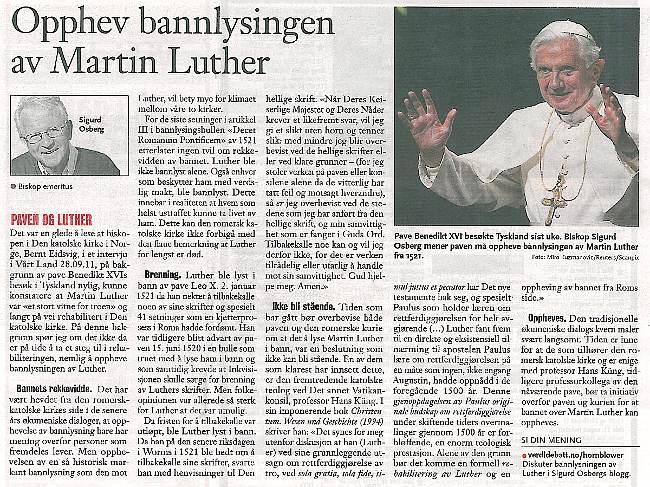Ratzinger om liturgien i 1998: Problemer med den tradisjonelle liturgien
I femte og siste del av min gjengivelse av kardinal Ratzingers foredrag om liturgien i 1998, understreker han at det faktisk var alvorlige problemer med den tradisjonelle liturgien på starten av 60-tallet. (Dette er ting det er viktig for tradisjonalister å ta alvorlig; observasjoner fra en person som kjente Kirken ut og inn fra før andre verdenskrig. De fleste av oss som lever i dag har jo bare lest oss til informasjon om liturgien før Vatikankonsilet.):
One notices a return to mystery, and to adoration and the sacred, and to the cosmic and eschatological nature of the liturgy. To this, the Oxford Declaration on the Liturgy of 1996 bears witnesses. On the other hand one has to admit that the celebration of the ancient liturgy was too lost in the realm of the individual and the private. One must admit that the communion between the priest and the faithful was lacking. I have great respect for our ancestors who during the Low Mass, said the prayers «during Mass» which their prayer book recommended. Certainly one cannot consider that as the ideal of the liturgical celebration! Perhaps, these reduced forms of celebration are the fundamental reason why the disappearance of the ancient liturgical books had no importance in many countries and caused no pain, There was never any contact with the liturgy itself. On the other hand, where the liturgical movement had created a certain love for the liturgy, where this movement anticipated the essential ideals of the Council -for example the prayerful participation of all at the liturgical action- there was a greater pain at the liturgical reform undertaken too much in haste and limiting itself often to externals. Where the liturgical movement never existed the reform did not -it first pose a problem. The problems arose in a spasmodic way where a wild creativity made the sacred mystery disappear.
This is why it is so important to obey the essential criteria of the Constitution on the Liturgy, which I cited above, even if one celebrates according to the Ancient Missal. At the moment when this liturgy truly touches the faithful by its beauty and depth, then it will be alive and there will be no irreconcilable opposition with the new liturgy -provided that these criteria are truly applied as the Council wished.
Hele foredraget kan leses her.

 I fjerde del av min gjengivelse av kardinal Ratzingers foredrag om liturgien i 1998, sier han at det heller er ulike matter å feire messen på og forstå Kirken på – heller enn to ulike riter – som er problemet:
I fjerde del av min gjengivelse av kardinal Ratzingers foredrag om liturgien i 1998, sier han at det heller er ulike matter å feire messen på og forstå Kirken på – heller enn to ulike riter – som er problemet: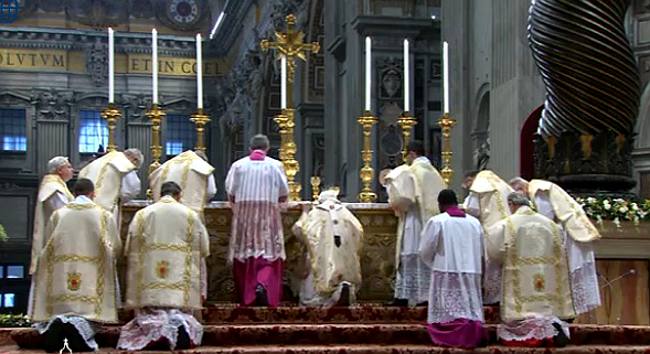
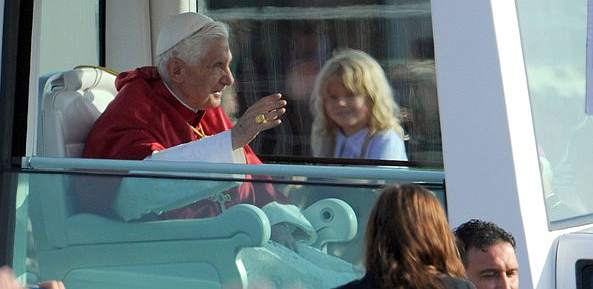
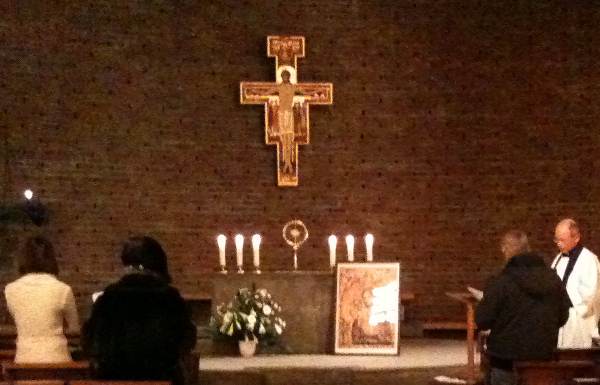
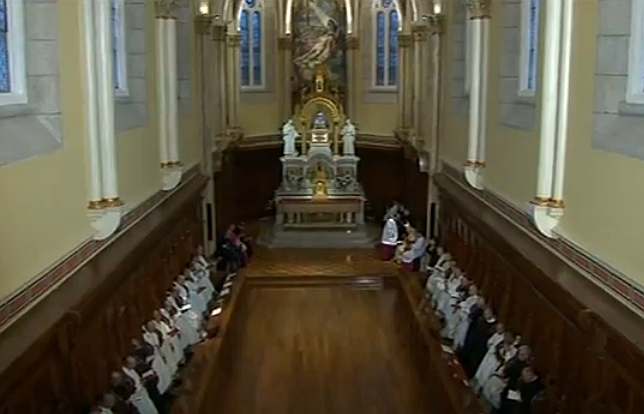 Pave Benedikt deltok nylig i en vesper i Chiesa della Certosa i
Pave Benedikt deltok nylig i en vesper i Chiesa della Certosa i 
